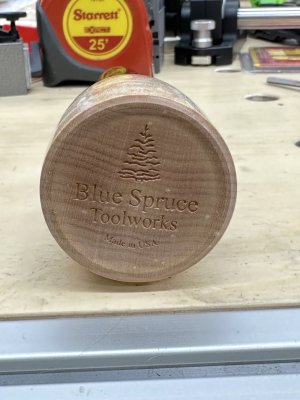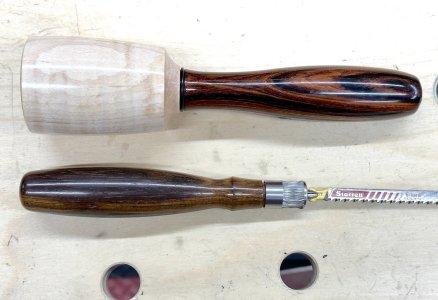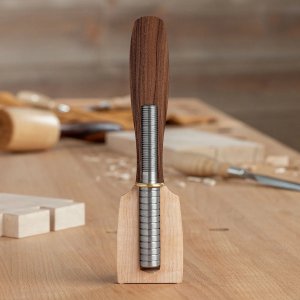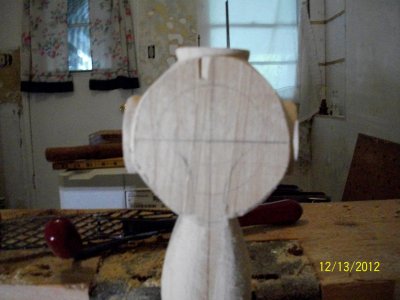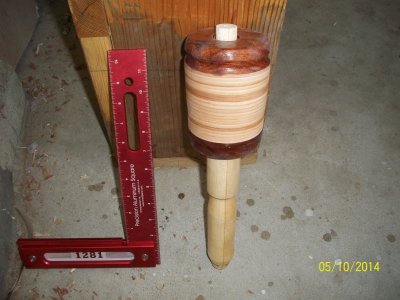You are using an out of date browser. It may not display this or other websites correctly.
You should upgrade or use an alternative browser.
You should upgrade or use an alternative browser.
woodworking chisels
- Thread starter oakleywav
- Start date
I use a Japanese genno hammer, shop-turned wooden mallet or the Halder: https://www.leevalley.com/en-ca/sho...111433-halder-simplex-replaceable-face-mallet
They all work well for me. You can try different ones/kinds and find what works better for you.
They all work well for me. You can try different ones/kinds and find what works better for you.
onocoffee
Member
I made my own mallets - a renin rectangular type whose design I saw in a video hanging in a Japanese tool shop but it is a style that seems generally unpopular, and a rough mallet sawn from a black locust tree branch. There both have their utility.
However, when I met Deneb from Lie-Nielsen a few weeks ago, he showed me their mallet. I think it was cherry hit it was compact and quite comfortable in the hand but with serious heft. I asked if they put steel shot or some kind of weight inside (like you see in a lot of videos) but he said they vacuum impregnate the wood with resin.
It was really nice and I’m interested in getting one but it’s not listed on their website and they evidently don’t bother to check their Instagram or Social Media messages so availability is unknown.
However, when I met Deneb from Lie-Nielsen a few weeks ago, he showed me their mallet. I think it was cherry hit it was compact and quite comfortable in the hand but with serious heft. I asked if they put steel shot or some kind of weight inside (like you see in a lot of videos) but he said they vacuum impregnate the wood with resin.
It was really nice and I’m interested in getting one but it’s not listed on their website and they evidently don’t bother to check their Instagram or Social Media messages so availability is unknown.
derekcohen
Member
- Joined
- Jun 22, 2008
- Messages
- 972
Well, I've accumulated a set of nice woodworking chisels --- a few Two Cherries and Stubai --- and I'm looking for a advice on mallet/hammer selection.
I've come across wooden, brass, and urethane varieties. Any preference ?
Hammers for chisels seems a personal preference.
One overriding rule - never use steel headed hammers on unhooped chisel handles. A gennou is designed for Japanese oire nomi (hooped bench chisels).
I dislike using round carving mallets with bench chisels. They are vulnerable to glancing blows. I also prefer a smaller head (of similar mass) in a hammer (such as a genou), as this focuses the force and with reduced effort.
Bench chisels do not need more than 18 oz (510 gms) for mortise chisels and you can easily get away with 12oz (340 g,s). My personal preference is lighter still, around 8 oz (225 gms).
A good way to protect non-hooped chisel handles from damage is to add a piece of UHMW to the steel head.
Some of my favourites:
225 and 375gm gennou ...
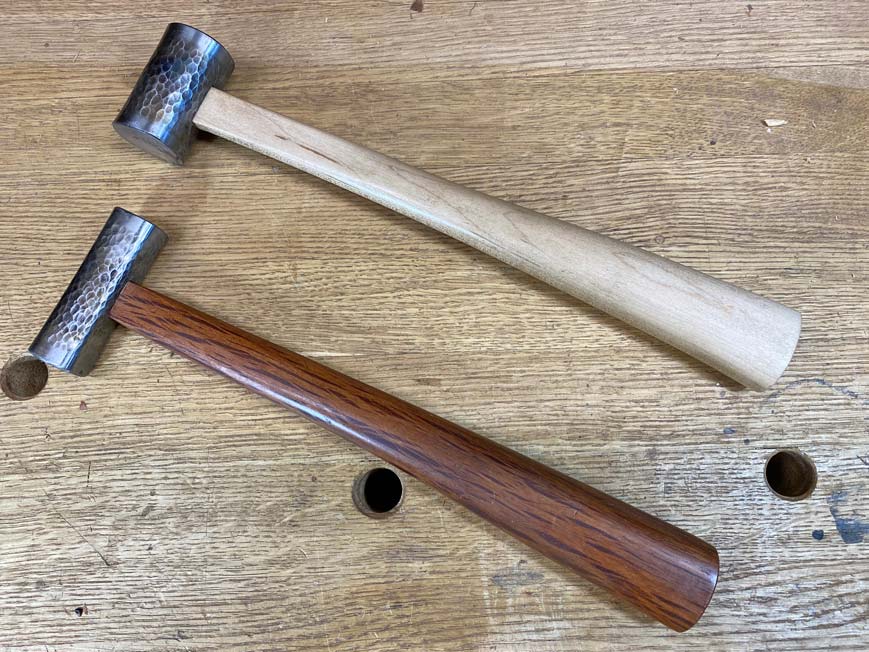
Brass with UHMW ...
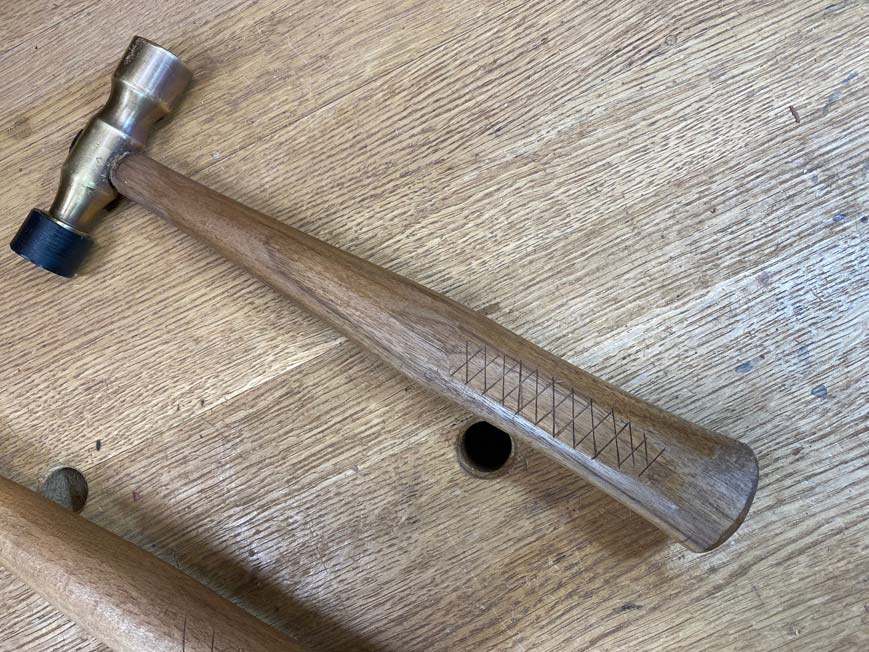
Modified Veritas Cabinetmakers mallet ...
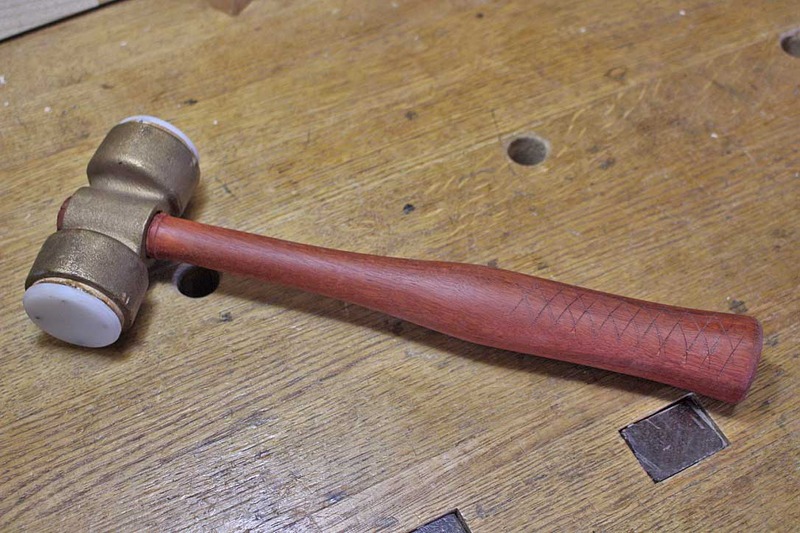
Note that the ideal mallet handle needs to be shaped and not a stick. This is a heavy mortising mallet - brass infill and double-grip handle (can be closed up) ...
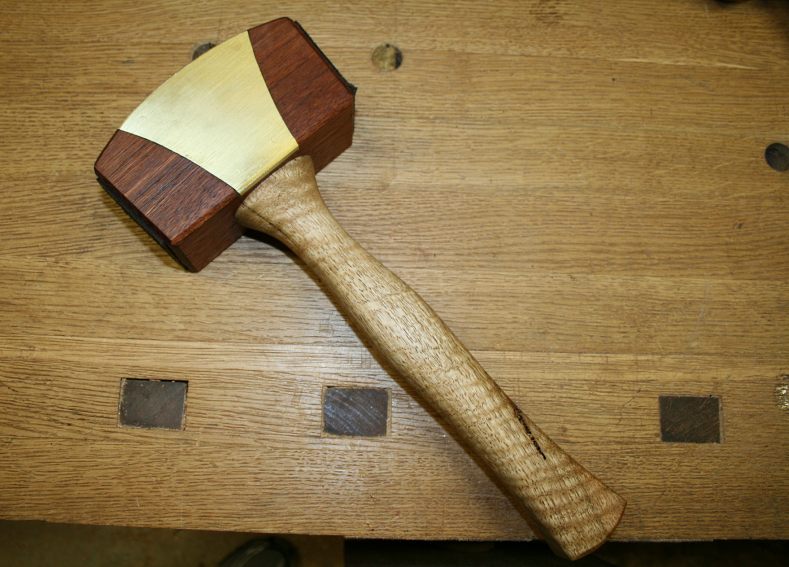
Regards from Perth
Derek
Cheese
Member
Sounds similar to what Blue Spruce does to their round curly maple mallets.However, when I met Deneb from Lie-Nielsen a few weeks ago, he showed me their mallet. I think it was cherry hit it was compact and quite comfortable in the hand but with serious heft. I asked if they put steel shot or some kind of weight inside (like you see in a lot of videos) but he said they vacuum impregnate the wood with resin.
They also add a rather large metal tang inside for additional heft.
Attachments
Last edited:
luvmytoolz
Member
I've seen that but I wonder how effective it is, I've used the Cactus Juice on some of our Aussie hardwoods and the penetration is practically nil even under high vacuum for an extended period. Which I would have thought a timber like Cherry to be similar as it's not a very porous wood. Unless it's an extremely low viscosity resin of some sort?Sounds similar to what Blue Spruce does to their round curly maple mallets.However, when I met Deneb from Lie-Nielsen a few weeks ago, he showed me their mallet. I think it was cherry hit it was compact and quite comfortable in the hand but with serious heft. I asked if they put steel shot or some kind of weight inside (like you see in a lot of videos) but he said they vacuum impregnate the wood with resin..
I'd love to see the whole process!
I can't speak for Lie-Nielsen, but the Blue Spruce mallet heads are roughly 80% heavier and denser after treatment. Denting one is not impossible, but you really have to have bad intentions.
onocoffee
Member
As @jeffinsgf noted with the Blue Spruce, the Lie-Nielsen version is also significantly heavier than I expected just looking at it. You pick it up and you're like "Woah!"I've seen that but I wonder how effective it is, I've used the Cactus Juice on some of our Aussie hardwoods and the penetration is practically nil even under high vacuum for an extended period. Which I would have thought a timber like Cherry to be similar as it's not a very porous wood. Unless it's an extremely low viscosity resin of some sort?
I'd love to see the whole process!
I'm trying to see if I can work out a visit to Lie-Nielsen next week so maybe I can learn more about their process.
Cheese
Member
Thanks for weighing-in Jeff...that resin infusion process would be some great subject matter for a deep dive. No need to give away trade secrets but just an informational exchange.I can't speak for Lie-Nielsen, but the Blue Spruce mallet heads are roughly 80% heavier and denser after treatment. Denting one is not impossible, but you really have to have bad intentions.
luvmytoolz
Member
It'd certainly be interesting. A search turns up that they use what seems to be a standard acrylic polymer resin. But in my experience stabilising timbers with Cactus Juice which isn't highly viscous at all, unless the timbers quite porous or punky, it doesn't get much penetration at all, even under maximum vacuum for days. And timbers like Maple it generally soaks into the ends a bit but not much further.Thanks for weighing-in Jeff...that resin infusion process would be some great subject matter for a deep dive. No need to give away trade secrets but just an informational exchange.


waho6o9
Member
Michael Kellough
Member
Maybe after a period of air evacuation and the stock is completely covered in resin the chamber is pressurized?It'd certainly be interesting. A search turns up that they use what seems to be a standard acrylic polymer resin. But in my experience stabilising timbers with Cactus Juice which isn't highly viscous at all, unless the timbers quite porous or punky, it doesn't get much penetration at all, even under maximum vacuum for days. And timbers like Maple it generally soaks into the ends a bit but not much further.
Cheese
Member
Well remember the end grain is like a straw so maybe a combination of pressure on one end and vacuum on the other?Maybe after a period of air evacuation and the stock is completely covered in resin the chamber is pressurized?
Michael Kellough
Member
That’s interesting.Well remember the end grain is like a straw so maybe a combination of pressure on one end and vacuum on the other?
Crazyraceguy
Member
- Joined
- Oct 16, 2015
- Messages
- 5,366
For me, it depends on the chisel width and what I'm trying to achieve. For smaller cuts, I use a Japanese pattern hammer, like the second one in Derek's pics. Beyond that I go up to a urethane dead-blow mallet.
I have a wooden mallet, that I turned many years ago, but it's more like a judge's gavel. It was fun, looks cool, but not very useful.....
I have a wooden mallet, that I turned many years ago, but it's more like a judge's gavel. It was fun, looks cool, but not very useful.....
luvmytoolz
Member
I couldn't see how that would be able to work, as generally you need to heat cure the resin as soon as possible after taking them out of the vacuum chamber otherwise the resin starts seeping out.Maybe after a period of air evacuation and the stock is completely covered in resin the chamber is pressurized?
And usually with using air pressure it's to reduce the size of air bubbles while the resin cures. So you could cure the resin in a heated chamber under pressure, but that won't act to force any further penetration.
Similar threads
- Replies
- 2
- Views
- 579
- Replies
- 1
- Views
- 417
- Replies
- 3
- Views
- 498

